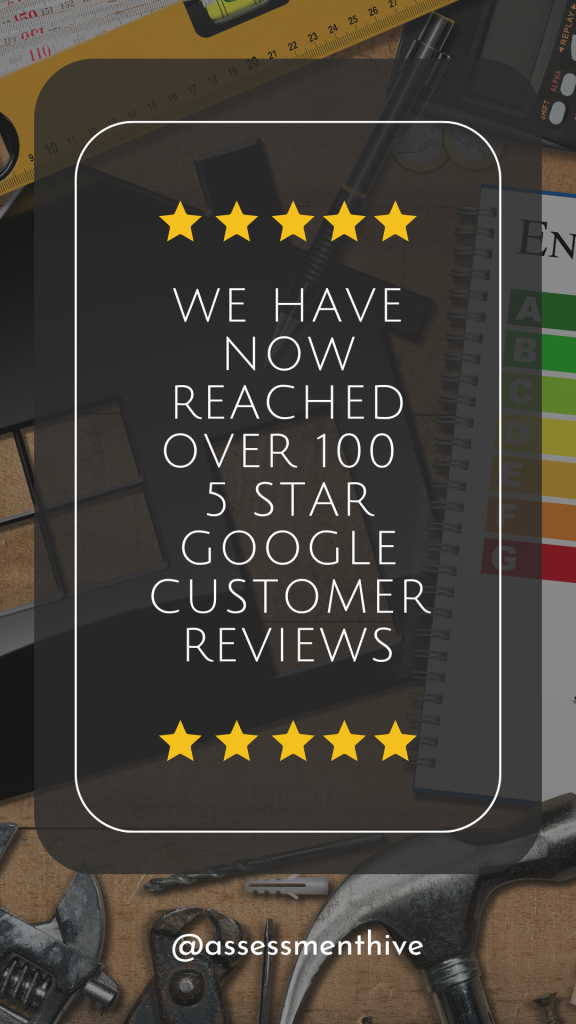What Happens During a Commercial EPC Assessment?
If you’re preparing to sell, lease or construct a non-domestic property in the UK, you’ll likely need a Commercial Energy Performance Certificate (EPC). But what exactly happens during the assessment? What should you expect, and how can you prepare?
At Assessment Hive, we carry out hundreds of Commercial EPC assessments each year — and we know that understanding the process in advance makes everything easier.
In this article, we’ll walk you through the full Commercial EPC process from start to finish, explain what’s required, and give you tips to ensure a smooth assessment.
🏢 What Is a Commercial EPC?
A Commercial EPC provides a rating of your building’s energy efficiency, from A (most efficient) to G (least efficient). It’s a legal requirement if you’re selling, letting, or building most non-domestic properties in England and Wales.
If you’re not sure whether you need one, see our post:
👉 What Is a Commercial EPC and Do You Need One?
👷 Who Carries Out the Assessment?
A qualified and accredited Non-Domestic Energy Assessor (NDEA) must complete your Commercial EPC. These professionals are trained to assess various building types and use approved software to calculate the energy performance rating.
At Assessment Hive, our assessors are fully accredited, experienced, and offer nationwide remote and on-site services, depending on your building type.
🧭 What Happens During a Commercial EPC Assessment?
Here’s a breakdown of each step in the process:
✅ 1. Pre-Assessment Planning
Before the site visit, we’ll gather key information to speed up the process:
-
Property address and usage type
-
Approximate floor area
-
Floor plans or layout drawings (if available)
-
Details of heating, cooling, and lighting systems
Tip: Providing accurate floor plans in advance reduces the time needed on site and may lower your quote.
✅ 2. On-Site Survey (or Remote Data Collection)
An assessor will visit your property to collect all the necessary data. In some cases, especially for newer or well-documented buildings, we may offer remote assessments.
During the on-site visit, we inspect:
-
📐 Building dimensions – internal measurements and layout
-
🧱 Construction materials – walls, roof, floors, glazing, insulation
-
🔥 Heating and cooling systems – boilers, air conditioning, heat pumps
-
💡 Lighting – type, efficiency, and controls
-
🛁 Hot water systems – water heaters, cylinders, and controls
-
🕹️ Building controls – thermostats, zoning, timers
Photographs are taken (for audit purposes only) and stored securely.
✅ 3. Zoning the Building
Non-domestic buildings often have multiple “zones” with different functions — e.g., office space, kitchens, storage areas. Each zone is treated separately in the assessment.
Correct zoning is essential for accurate modelling, especially for buildings like:
-
Mixed-use units
-
Retail + office combos
-
Warehouses with attached offices
✅ 4. SBEM Modelling
After data collection, your assessor uses SBEM software (Simplified Building Energy Model) to simulate how the building uses energy.
This modelling considers:
-
Building fabric and thermal performance
-
Heating/cooling system efficiency
-
Lighting and controls
-
Occupancy schedules
The output determines the EPC rating (A–G) and includes a report with recommendations for improving energy efficiency.
Learn more about SBEM here:
👉 SBEM Calculations
✅ 5. Certificate Generation & Lodgement
Once modelling is complete, we:
-
Generate your Energy Performance Certificate
-
Lodge it on the official UK EPC Register
-
Email you the PDF and any supporting documents
The certificate is valid for 10 years, unless the building undergoes significant changes.
⏱️ How Long Does a Commercial EPC Assessment Take?
| Property Type | Time on Site | Total Turnaround |
|---|---|---|
| Small shop or office | 1–2 hours | 1–2 days |
| Medium business unit | 2–4 hours | 2–3 days |
| Large complex building | 4+ hours | 3–5 days |
At Assessment Hive, we aim for a 48-hour turnaround where possible — faster in urgent cases.
💷 How Much Does a Commercial EPC Cost?
Prices vary depending on the size and complexity of your building. For full cost guidance, read our article:
👉 How Much Does a Commercial EPC Cost in the UK
🧠 What Can You Do to Prepare?
To speed up your assessment and reduce costs, here are some tips:
-
✅ Provide floor plans or layout drawings
-
✅ Ensure access to all areas (plant rooms, lofts, etc.)
-
✅ Share any HVAC specs, lighting schedules, or control manuals
-
✅ Let us know about any recent upgrades or insulation work
🚫 What Happens If You Don’t Get a Commercial EPC?
Not having a valid EPC when required can lead to:
-
❌ Fines of £500–£5,000
-
❌ Delays in sale or lease agreements
-
❌ Potential enforcement action from local authorities
Under MEES regulations, you also cannot legally rent out a commercial property with an EPC rating below E (unless exempt).
✅ Why Choose Assessment Hive?
We make the EPC process simple, fast, and fully compliant:
-
🏆 Qualified, accredited assessors
-
📍 Nationwide service (remote and on-site)
-
📆 Fast turnaround – often within 1–3 days
-
💬 Clear communication & expert support
-
💡 Advice on how to improve your EPC rating
We also offer Water Efficiency Calculations, Overheating Assessments, and SAP Calculations — all available from the same trusted team.
🚀 Book Your Commercial EPC Assessment Today
Let’s take the stress out of compliance.
Book your EPC with Assessment Hive and get expert support from start to finish.



📞 Call us on 020 7183 3240
📧 Email us at [email protected]
📝 Request Instant Quote → Click Here







